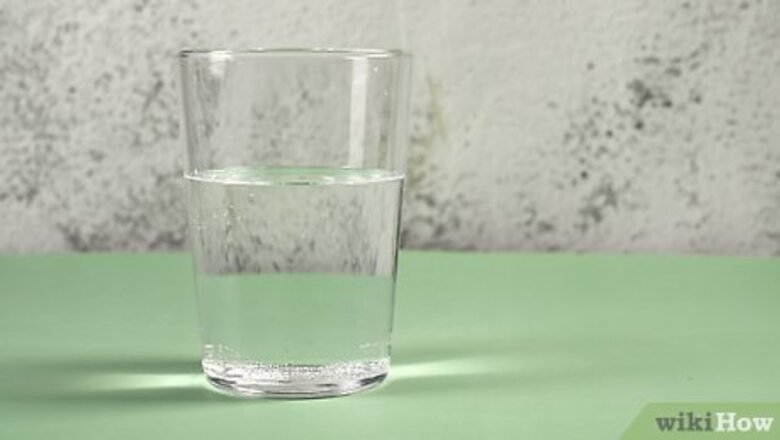
views
Using Tonic Water
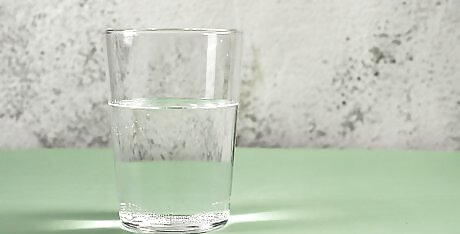
Pour tonic water into a clear container. Believe it or not, plain old tonic water glows under a black light — quite brightly, as well. To get this effect, start by pouring some tonic water into a container where you can see it. You can add it by itself or dilute it with water. However, the more water you add, the dimmer it will glow. Tonic water is available at most local stores and supermarkets for just a few dollars. Be sure to get tonic water, not club soda or soda water. The bottle should say "with quinine" or something similar.

Shine a black light on the tonic water. All you need to do to get tonic water to glow bright is to illuminate it with a black light. Be sure to dim the lights in the room before you do this or it will be more difficult to see the glowing effect. Black lights are available from specialty party stores (like Spencer's, etc.) or online. The price for the black light often depends on its size and brightness — basic lights can cost as little as $20 or less.
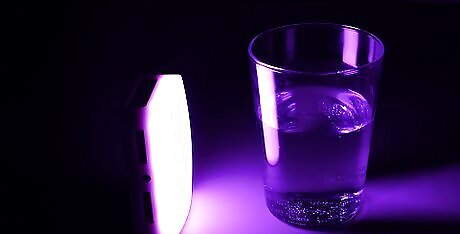
Don't worry about drinking the tonic water. Making tonic water glow with a black light makes it look very strange, but it doesn't make it poisonous, radioactive, or harmful to drink in any other way. However, tonic water is often high in calories and sugar, so enjoy it sparingly. Tonic water glows this way because of tiny chemicals called "phosphors" inside the liquid. When ultraviolet light from the black light (which humans can't see) hits the phosphors, they convert it into a form that humans can see, producing the glow.
Using Highlighters
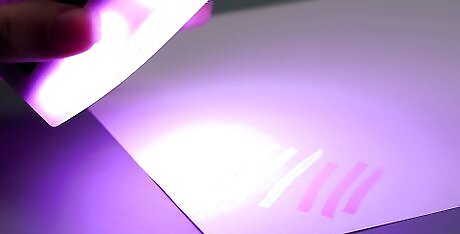
Purchase and test out highlighters to see if they glow. Not all highlighters have the glow-in-the-dark quality produced under a blacklight, so draw with them on white paper first and run a black light over to see if they do. You can use any color, but yellow is the most likely to glow in the dark consistently. Any brand of highlighter should work, but you can try neon colored markers of a non-highlighter variety as well. It is easiest to see if they glow in a room that is completely dark, allowing for no light pollution.
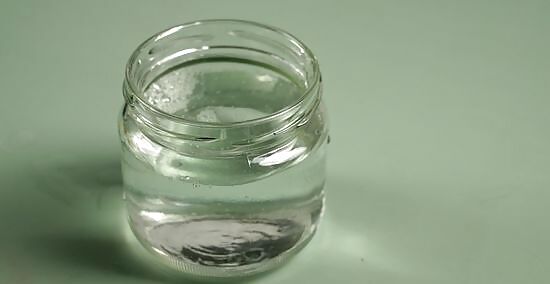
Fill a clear container with water. Tonic water isn't the only substance that contains light-producing phosphors — plain old highlighter markers work in a similar way as well. Start (as before) by filling a clear container like a glass jar with water. Note that this method will ruin your highlighter marker — it won't work when you're done.
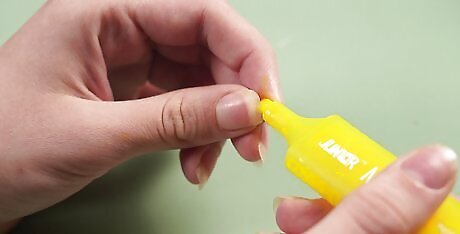
Take the ink tube out of the highlighter. If you just drop a highlighter into a jar of water, it won't bleed ink very quickly through the strip of felt at the tip. Instead, you'll want to take the entire ink tube out. To do this: Uncap the highlighter. Use a pair of pliers (or your hands if you don't mind getting messy) to pull the felt out of the tip. Use pliers to pry off the bottom of the marker. Carefully pull the ink tube out, taking care not to spill or mark your clothing.
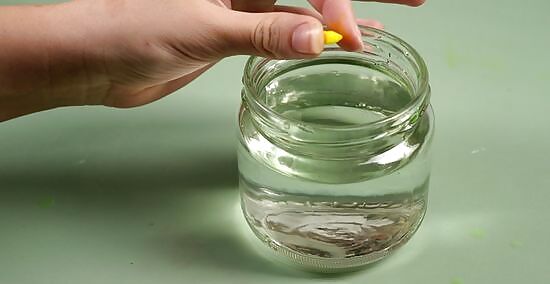
Place the felt stick and ink tube into the jar. Drop the felt, the ink tube, and any other ink you can get out of the marker into the water. The ink should bleed into the water, changing its color. Cut or break the ink tube if needed to get the ink out. Mix the water well so that the color is even. You can leave the ink tube and felt in the water when the ink is done mixing or you can fish them out — it's up to you.
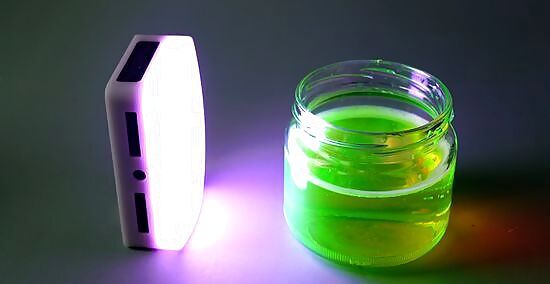
Shine a black light at the water. Just like with the tonic water method above, a dark room and a black light will make the highlighter ink in the water glow brightly. You can also tape a flashlight to the bottom of the container to make a colored light (however, the "neon" effect you'd get with a black light is lost.) Unlike tonic water, the glowing water from this method is not safe to drink.
Using Fluorescent Paint
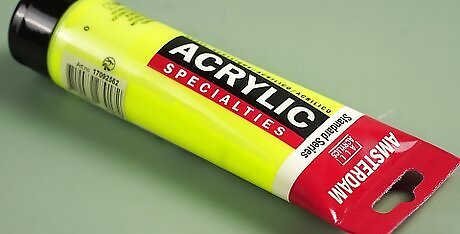
Find fluorescent paint at a craft store. The paint must be a tempera or water-soluble base so that it will mix with the water. You can even purchase glow-in-the-dark craft paint for an added glow. Similar to highlighters, any neon color of paint will work, but lemon yellow and lime green are the most effective.

Pour the paint into a cup of water. To increase the glow the water will put out, use as much paint as you are able. Several tablespoons can be used for a single cup of water.
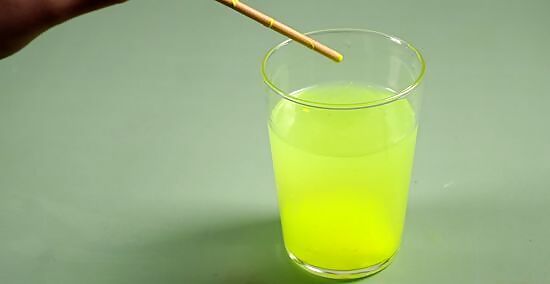
Mix the paint thoroughly. Use a stirring stick or a similar tool — not a kitchen spoon. Make sure that the paint is completely dissolved into your cup of water before proceeding. Warm or hot water will help to dissolve the paint faster. If you let the water sit for a long time, the paint may begin to separate. Prepare this glow water for use immediately after stirring.
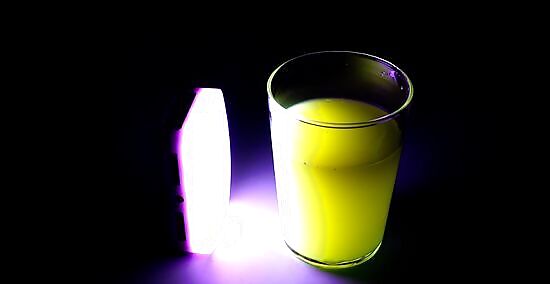
Test the water. Turn off all the lights in the room and run a black light over your glow water. Be careful when handling this type of glowing water — since it contains paint, it can cause major stains in fabric. This mixture is not safe to drink.
Using Glow Sticks
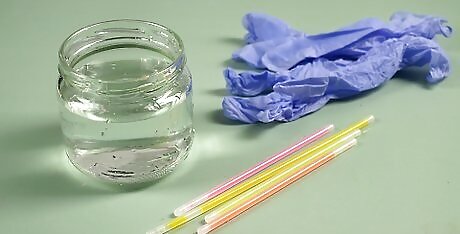
Fill a container with water and grab your materials. In this method, you'll use water, glow sticks, and several other common ingredients to make water that doesn't need a black light to glow. As in the methods above, start by filling a clear container, like a bottle or jar, with water. You'll also need a few other things before you get started: One or more glow sticks Scissors Dish soap Hydrogen peroxide Waterproof gloves
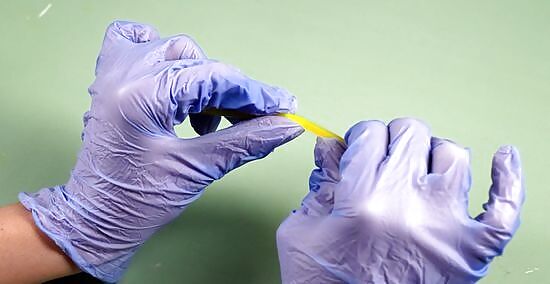
Crack your glowstick(s). Take each glowstick, find the glass vial within, and bend the stick until you feel a "crack." The tube should immediately begin to glow — this will be easiest to see if the lights are off. Repeat this for each glow stick. The more glow sticks you use, the brighter your water will be. Glow sticks are available at party stores and many department stores (especially around Halloween.) They are generally very cheap — a 100-pack can cost as little as $12. Try to find the largest glowsticks available, so that your water can offer the most luminescence as possible.

Pour the glowing contents into the water. Put your gloves on. Using your scissors, carefully cut off the tip of each glow stick and pour the glowing liquid within into the water. Mix the water and the glowing liquid. Be careful — remember that each glow stick contains broken glass.
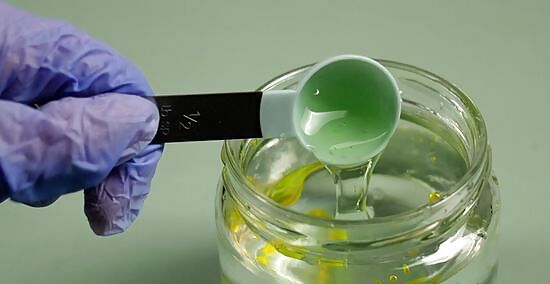
Add hydrogen peroxide and dish soap (optional.) Your water should now be glowing, but with a few extra ingredients, you can make it even better. Measure out a few capfuls of hydrogen peroxide and pour them into the mixture, then squirt in about a half-teaspoon of ordinary dish soap (e.g., Palmolive, Ajax, etc.) The two chemicals in a glow stick are diphenyl oxalate (in the plastic tube) and hydrogen peroxide (in the inner glass vial.) When you crack the tube, the glass vial breaks and the two chemicals mix, producing light. Adding extra hydrogen peroxide is the same as adding more of the chemical in the glass vial, which makes the reaction brighter. Dish soap contains chemicals that reduce the surface tension of the water, making it easier for the hydrogen peroxide and the diphenyl oxalate to mix.
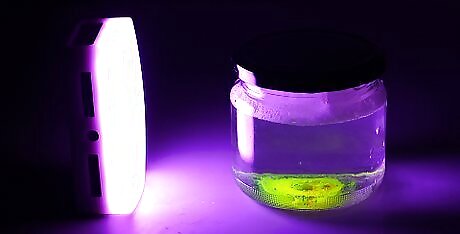
Shake and enjoy! When you're finished, seal your container and shake it (or just stir it) to make sure that all the ingredients have mixed. When you're done, your water will glow with or without a black light (though a black light can enhance the effect.) This mixture is not safe to drink.


















Comments
0 comment